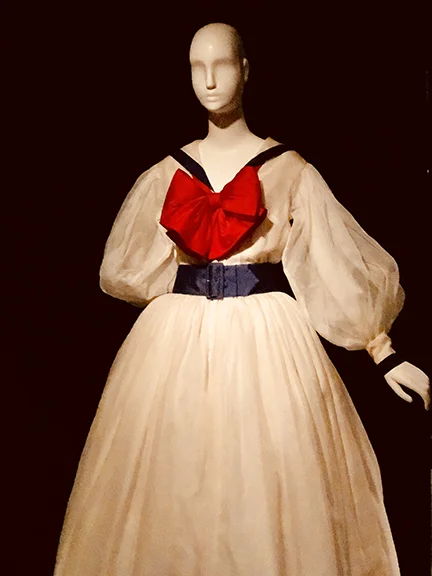Exhibition Review: Gordon Parks I Am You Part 2
Doll Test, Harlem, New York, 1947
Images Courtesy of Jack Shaiman Gallery
Exhibition Review: Gordon Parks I Am You Part 2
By Ilana Jael
While Black History month may be coming to an end in only a few days, viewers thankfully have until March 24th to explore the groundbreaking work of renowned African-American photographer Gordon Parks at Jack Shainman Galleries on 524 West 24th Street. Born into poverty and segregation in Fort Scott, Kansas, in 1912, Parks’ poverty-stricken background, dedication to social justice, and working-class past are all clearly visible in his choice of subjects and the passionate eye with which he captures them.
Some of his work is overtly political, such as a picture taken during a protest and featuring signs bearing inflammatory slogans like “Do Whites Love Their Enemies”, those focusing on legendary activist Martin Luther King, and a short film exploring poverty entitled “Diary of a Harlem Family (1968)”. But in most of Parks’ pictures, the expressions of those everyday people he photographs and the implied relationships between them speaks more subtly to America’s thorny culture of racism and its pervasive and often devastating influence.
Untitled, Watts, California, 1967
Images Courtesy of Jack Shaiman Gallery
For example, many featured pictures are of children, children both black and white. In one memorable image, as a white child smiles carelessly while the two black boys beside him holds guns, one wearing a vicious expression and the other with eyes grimly focused straight ahead, both serving as a haunting harbinger of their potential adult initiation into a culture of violence that continues to bring turmoil to African American communities to this day.
In another photograph, a cynical looking African American girl stares longingly over the shoulder of a white peer, with the implication perhaps being that it is a shoulder she will be looking over for the rest of her life. And in an image reflecting on how early racial self-hatred can become internalized, a young black boy poignantly points, presumably in preference, to a white baby doll and ignores the black doll beside it.
In other images, class is at the forefront. A black nanny holds a white toddler as a wealthy white woman watches idly. Or a beautiful, pristinely dressed African American mother and daughter are shown looking frustrated and exhausted underneath a sign that says, “Colored Entrance”, with the same woman later pictured hunched over a water fountain labeled “Colored Only”. Even if they’ve achieved some degree of status as indicated by their formal dress, they’re unable to fully integrate into a segregated world where whiteness rules. Many other simple images, such as of a black man peering out from beneath a manhole, a black youth smoking a cigarette, and a black woman cleaning her house, call to mind imagined histories of pain and emphasize their subject’s humanity, ultimately leading us to question a racist system that would so consistently undermine it.
Untitled, Chicago, Illinois, 1957
Images Courtesy of Jack Shaiman Gallery
Though many of Park’s images are dismal, dark and shadowy, this exhibition also isn’t all doom and gloom. From behind, he captures a moment of joy as two young African American figures revel playfully in the sight of an exploding sprinkler. In another picture, he finds an elderly black man sitting serene and god-like against an almost mystical-looking luminous backdrop. For as much as Parks’ photography is an indictment against the oppression of a people, it is also a moving testament to their resilience.
At Segregated Drinking Fountain, Mobile, Alabama, 1956
Images Courtesy of Jack Shaiman Gallery
Invisible Man Retreat Harlem New York, 1952
Images Courtesy of Jack Shaiman Gallery
Department Store, Mobile, Alabama, 1956
Images Courtesy of Jack Shaiman Gallery
Black Panther Headquarters, San Francisco, California, 1970
Images Courtesy of Jack Shaiman Gallery'
Untitled, Washington, D.C., 1963
Images Courtesy of Jack Shaiman Gallery















